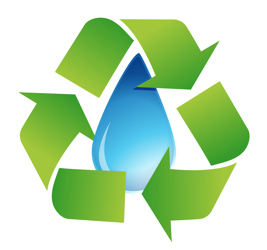In Growing Cities, Potable Reuse Is Becoming Increasingly Palatable


An innovative practice that has long been championed by wastewater treatment professionals seems to finally be catching on as source water demand rises across the country.
“Around the U.S., cities are increasingly warming to an idea that once induced gags: Sterilize wastewater from toilets, sinks and factories, and eventually pipe it back into homes and businesses as tap water,” the Associated Press reported. “The shifting attitudes around a concept once dismissively dubbed ‘toilet to tap’ come as dry regions scramble for ways to increase water supplies as their populations boom and climate change intensifies droughts.”
Proponents of the practice, who often refer to it as “potable reuse,” have pointed out that the resulting effluent is just as clean and safe to consume as wastewater that is discharged into the environment and mingled with source water for indefinite amounts of time before being treated as drinking water.
For example, one San Diego water reclamation plant uses the treatment process described below to ensure that the recycled wastewater is more than thorough enough to remove constituents prior to consumption.
“First the system hits the wastewater with ozone, which destroys bacteria and viruses,” according to Wired. “Then it pumps the water through filters packed with coal granules that trap organic solids. Next, the water passes through fine membranes that snag any remaining solids and microbes… The next step blasts the water with UV light, to obliterate any microbes and other trace contaminants. The end result is water in its purest form — too pure, in fact. The last phase is ‘conditioning’ the liquid by adding minerals back to it.”
For whatever reason, the actual resulting purity of the recycled wastewater has not historically resonated with many consumers. But now, with many regions in the U.S. struggling with acute drought conditions as their populations grow, communities seem to have little choice but to embrace the practice.
“In the Los Angeles area, plans to recycle wastewater for drinking are moving along with little fanfare just two decades after similar efforts in the city sparked such a backlash they had to be abandoned,” per AP. “Though there are still only about two dozen communities in the U.S. using some form of recycled water for drinking, that number is projected to more than double in the next 15 years.”
While the increasing need seems to be outpacing any issues with public perception, many water systems around the country may still feel the need to convince consumers of the safety of the process. As source water becomes more strained, and the process of recycling wastewater more prevalent, consumer outreach initiatives are increasing as well.
“To warm residents to the idea, Colorado Springs Utilities is hosting a mobile exhibit that shows how wastewater recycling works,” AP reported. “On a cold, rainy afternoon, dozens of visitors showed up to learn about the carbon-based purification process and sample the results, which several noted tasted no different than their usual supply.”
The combining factors, and ongoing efforts by the nation’s water supplies, suggest that a practice long championed by professionals in the space could some become palatable to thousands of consumers.
To read more about how recycling wastewater works, visit Water Online’s Water Reuse Solutions Center.
